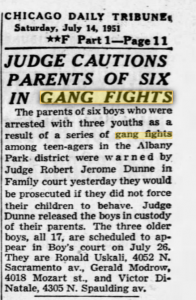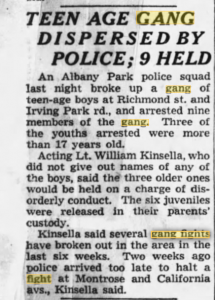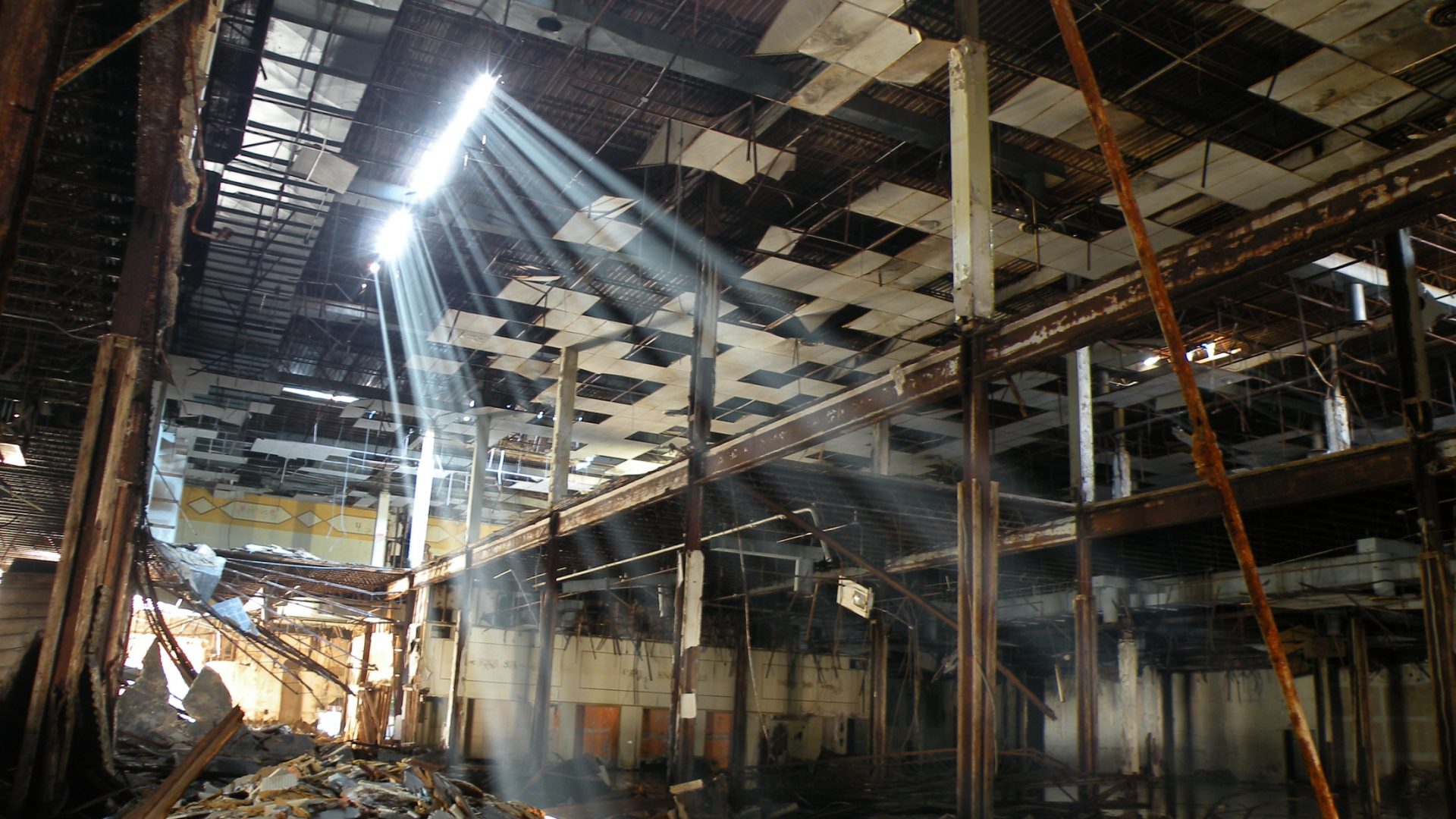| Origins | Settled by Christopher J. Ward in 1833 and annexed in 1889 |
|---|---|
| Area | Northwest Side |
| Boundaries | Lawrence Avenue on the north west down Elston Avenue into Montrose Avenue in the north east, Belmont Avenue on the south west to Addison Street on the south west, Chicago River on the east, Knox Avenue on the west |
| Gangs headquartered | Simon City Royals, Maniac Latin Disciples, |
The Irving Park area was first settled in the year 1833 by Christopher J. Ward. Ward was the only resident in the area until 1843 when Major Noble (Noble Street is named after him) wanted to purchase some of the land and built a farm. Noble opened a tavern called the “Buckthorn Tavern” which catered to travelers that were moving in and out of the city, this got the area noticed.
There was no other settlement in this area until 1869 when Charles T. Race (Race Street is named after him) bought the farm and built his own home on the property. Race then had full intentions of setting up a town and his first step was to pay for a train depot that was called “Irvington” that would bring a train stop from the Chicago and North Western Railroad. This stop would offer workers to commute to and from the city while living in this community. He also opened the “Irving Park Land Company” which aimed at subdividing the land for scores of houses. The town of Irving Park was a success as wealthy elites moved to this suburb to escape the harsh realities of city life. The suburb was almost exclusively upper class to middle class residents.
In the year 1889 Irving Park was officially annexed into the city of Chicago and within a few years roads were repaved and many new buildings and other structures went up which brought about floods of German and Swedish migrants to the area. By the 1920s Polish and Russian immigrants joined them as the neighborhood continued to flourish over the next several decades.
This community would even fair well during the Great Depression years in the 1930s and would continue to be a well-functioning middle class neighborhood over the next few decades. The only issue Irving Park faced was wild greaser gangs that loved this neighborhood.
Starting in 1949, Irving Park became a big greaser hang out as some of the earliest gang brawl newspaper articles took place in this neighborhood in 1949. In 1960, the Popes gang arrived in this community after their first two hangout spots didn’t pan out. The Popes arrived at the beautiful Kilbourn Park sometime in the 1960s and made this park their own. The Popes would become the first significant gang on these streets. The Popes then invited their pals the Gaylords to hang out in the park in the 1960s until the Popes gave the park to the Gaylords and the Popes mostly left Irving Park for a short time. The legendary Kilbourn Park Gaylords were born that swore to protect this white middle class northwest side neighborhood from any possible invasions from black and Hispanic gangs. The Gaylords fell in love heavier with this community more so than their Pope predecessors as they dominated this community entering the new decade.




It wouldn’t take long before the Popes became interested in this neighborhood once again as they established the legendary Kolmar Park section then went from there. In 1975 Popes and Gaylords engaged in a violent gang war that shook this neighborhood. The legacy of violent and dangerous greaser gangs would continue to haunt these streets as the Gaylord and Pope war was taxing. The Pope and Gaylord war was taxing on the Popes because it caused police to put pressure on the Popes after Larkin’s death causing them to close Independence Park in 1975
As the 1980s set in Irving Park would experience a Hispanic wave and the Orquestra Albany street gang arrived alongside this wave. Gaylords especially would have a major issue with OAs and war ensued. The Latin Pachucos settled Kilbourn Park and Addison Ave in the year 1988 as they warred with Gaylords over Kilbourn Park.
In the 1990s, Irving Park experienced the largest gang wave as several various groups came to this community between the 1990s and 2000s decades. Many of these gangs set up small territories and came and went. Popes left the area in the 90s and were replaced by the Simon City Royals that became the new craze among youths in the community. The Royals soon grew very large as Gaylord and Popes withdrew from the area. OAs also left leaving Royals and Pachucos to become the dominating groups of Irving Park.
In the 2000s decade as the Pachucos and Royals decreased in numbers the Maniac Latin Disciples colonized this community quickly becoming a dominating group fighting what was left of the Pachucos and going at it with the Royals.
In present decades the Royals continue to be a dominating force along with Maniac Latin Disciples. The two groups are both Folks but do not like each other one bit.
In the 21st century the neighborhood became more gentrified as yuppies began to encroach on this neighborhood as well, most of the gang activity died down after that.
Irving Park has had lots of gang violence over the decades; however, this community never became close to one of the more dangerous communities in Chicago.
If you are from the newer arriving young urban professional crowd, you might be interested to know these prominent gangs once were on the streets you are on now:
Ambrose
Bertau to Belle Plaine, Spaulding to Sawyer
Gaylords Established 1969-2000s
Addison to Roscoe, Kenton to Kilbourn (Kilbourn Park, KPGL) Established 1969-2000s
Bryon & Albany (Cleveland School, Cleveland Gaylords)
Francisco & Cullom
Karlov & Newport
Byron & Troy (Cleveland School, Cleveland Gaylords)
Waveland & Whipple
Insane Popes (north side group) Established 1960-1990s
Kilbourn & Addison (Kilbourn Park) 60s
Berteau & Kolmar (Kolmar Park) 70s, 80s, 90s
Irving Park Road & Kostner 70s, 80s, 90s
Kilbourn & Addison (Kilbourn Park) 60s
Irving Park Road & Ravenswood
Irving Park Road from Pulaski to Homan (Independence Park) 1973-1975
Latin Eagles
Belle Plaine & Monticello
Latin Pachucos Established 1988-2000s
Addison from Ave Drake to Central Park (Athletic Field Park) 1988-2000s
Addison & Sacramento 1988-2000s
Addison & Kilbourn (Kilbourn Park) 1988-2000s
Simon City Royals 90s-present years
Collum to Bertau, St. Louis to Kimball (KC Royals) 90s-present years
Irving Park Road & Bernard 90s-present years
Lawndale & Grace 90s, 2000s
Latin Kings
Montrose to Bertau, Pulaski to Avers
Insane Deuces
Keystone & Cullom
Satan Disciples
Grace & Kedzie
Orquestra Albany 80s, 90s
Albany & Grace 80s, 90s
Gangster Disciples
Henderson & Keeler
Maniac Latin Disciples 2000s-present years
Irving Park Road to Milwaukee, Kostner to Kildare 2000s-present years
Grace to Waveland, Troy to Albany 2000s-present years
Roscoe & Avers
Taylor Jousters Established 1984-1989
Agatite & Kilbourn Established 1984-1989
United Freaks Established 1976-mid 80s
Kedvale & Grace
Lowell & Cullom
